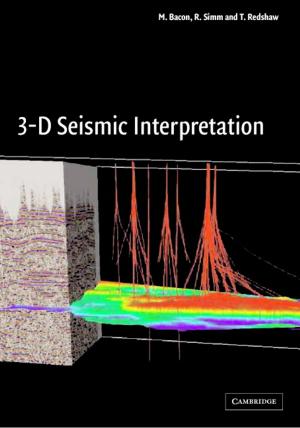Titan
Interior, Surface, Atmosphere, and Space Environment
Nonfiction, Science & Nature, Science, Earth Sciences, Geology, Physics, Astronomy| Author: | ISBN: | 9781139609661 | |
| Publisher: | Cambridge University Press | Publication: | February 24, 2014 |
| Imprint: | Cambridge University Press | Language: | English |
| Author: | |
| ISBN: | 9781139609661 |
| Publisher: | Cambridge University Press |
| Publication: | February 24, 2014 |
| Imprint: | Cambridge University Press |
| Language: | English |
Titan, the largest of Saturn's moons, shares remarkable similarities with Earth. Its thick atmosphere is composed primarily of nitrogen; it features the most complex organic chemistry known outside of Earth and, uniquely, hosts an analog to Earth's hydrological cycle, with methane forming clouds, rain and seas. Using the latest data from the ongoing Cassini–Huygens missions, laboratory measurements and numerical simulations, this comprehensive reference examines the physical processes that shape Titan's fascinating atmospheric structure and chemistry, weather, climate, circulation and surface geology. The text also surveys leading theories about Titan's origin and evolution, and assesses their implications for understanding the formation of other complex planetary bodies. Written by an international team of specialists, chapters offer detailed, comparative treatments of Titan's known properties and discuss the latest frontiers in the Cassini–Huygens mission, offering students and researchers of planetary science, geology, astronomy and space physics an insightful reference and guide.
Titan, the largest of Saturn's moons, shares remarkable similarities with Earth. Its thick atmosphere is composed primarily of nitrogen; it features the most complex organic chemistry known outside of Earth and, uniquely, hosts an analog to Earth's hydrological cycle, with methane forming clouds, rain and seas. Using the latest data from the ongoing Cassini–Huygens missions, laboratory measurements and numerical simulations, this comprehensive reference examines the physical processes that shape Titan's fascinating atmospheric structure and chemistry, weather, climate, circulation and surface geology. The text also surveys leading theories about Titan's origin and evolution, and assesses their implications for understanding the formation of other complex planetary bodies. Written by an international team of specialists, chapters offer detailed, comparative treatments of Titan's known properties and discuss the latest frontiers in the Cassini–Huygens mission, offering students and researchers of planetary science, geology, astronomy and space physics an insightful reference and guide.















